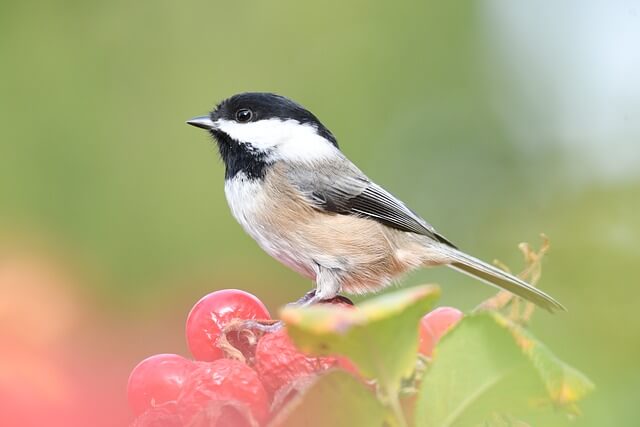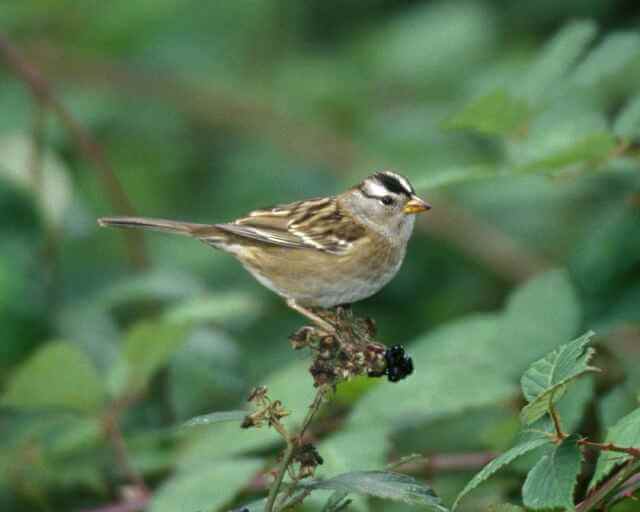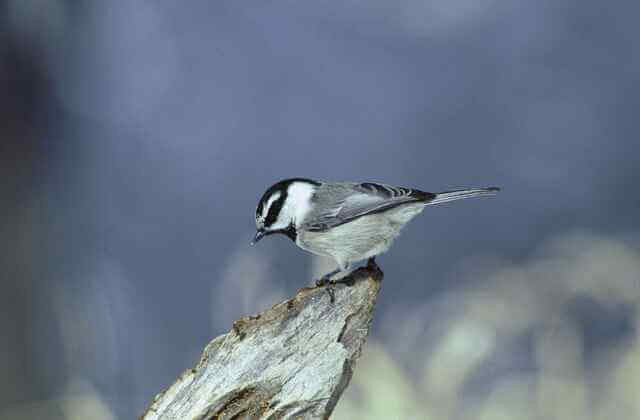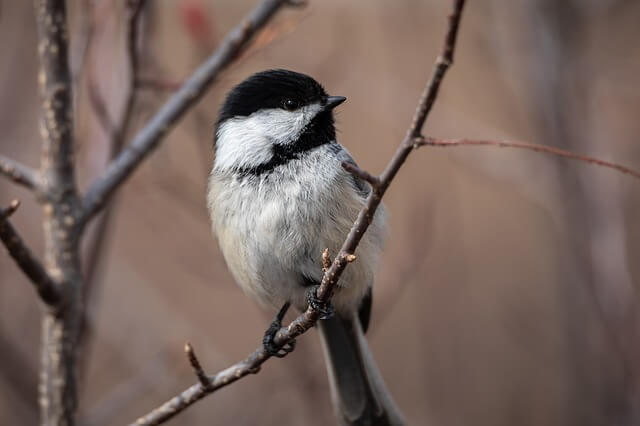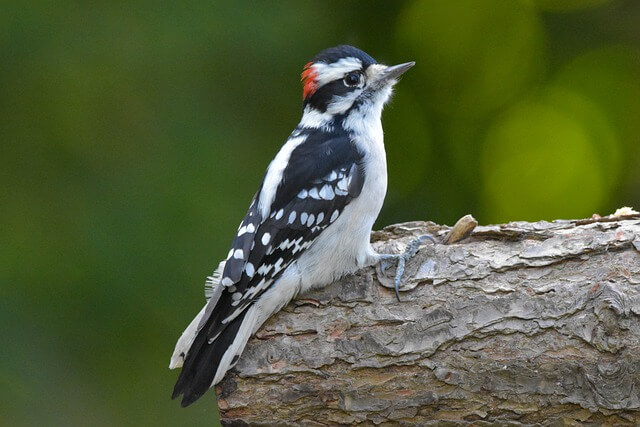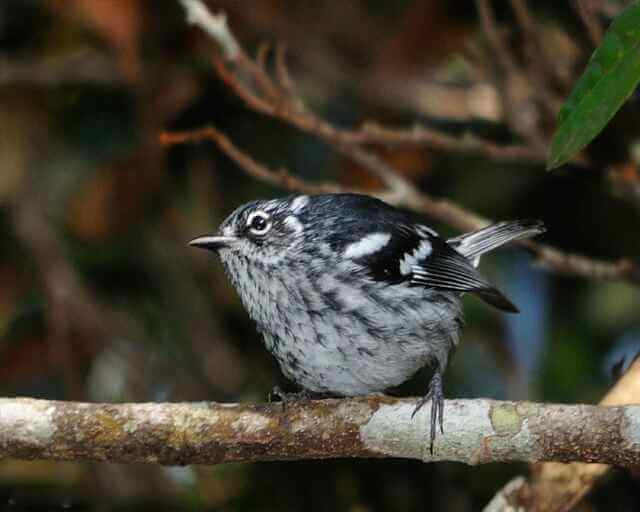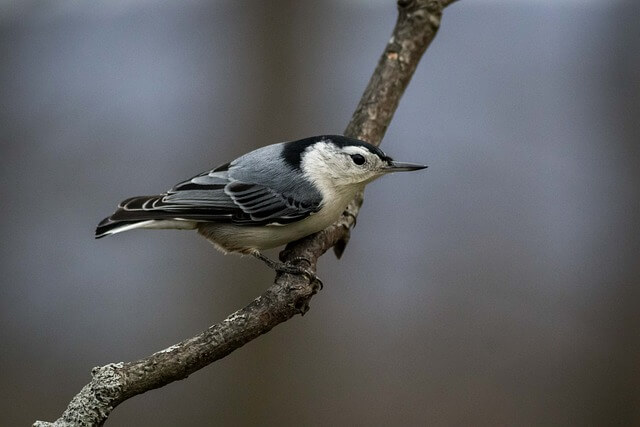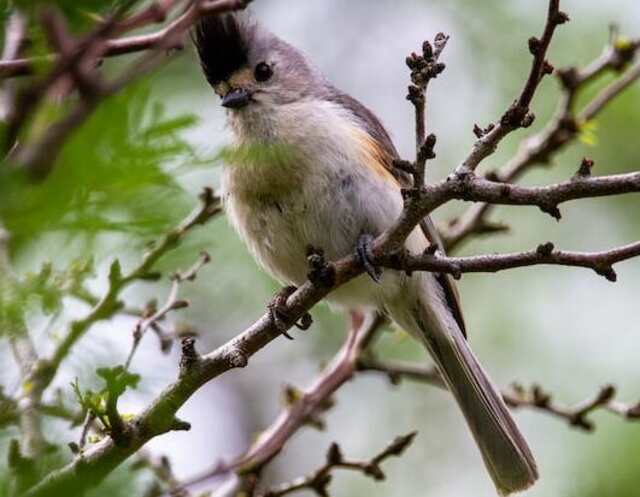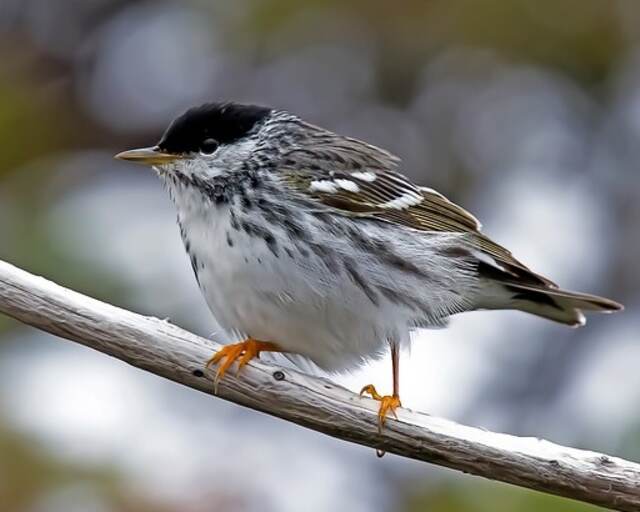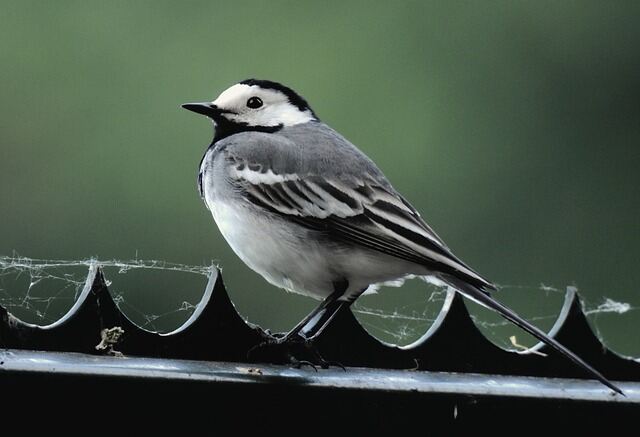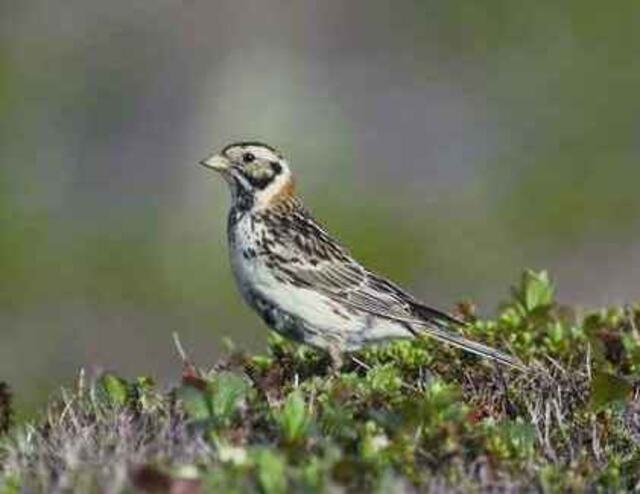Small birds with black and white heads are a true marvel for birdwatchers. With their contrasting plumage, these little creatures are often easy to spot and fascinating to observe. Whether you’re a seasoned birder or a casual enthusiast, these birds bring a unique charm to any backyard or wild habitat. Let’s explore 15 of the most captivating species that boast these striking features.
Click the Play button below to listen to our podcast:
Table of Contents
- 1 Small Birds With Black And White Heads
- 1.1 Black-capped Chickadee
- 1.2 White-crowned Sparrow
- 1.3 White-throated Sparrow
- 1.4 Mountain Chickadee
- 1.5 Carolina Chickadee
- 1.6 Downy Woodpecker
- 1.7 Black and White Warbler
- 1.8 White-breasted Nuthatch
- 1.9 Black-crested Titmouse
- 1.10 Blackpoll Warbler
- 1.11 Black-throated Gray Warbler
- 1.12 White Wagtail
- 1.13 Chestnut-collared Longspur
- 1.14 Black Rosy-Finch
- 1.15 Bobolink
- 2 Author
Small Birds With Black And White Heads
Black-capped Chickadee
The Black-capped Chickadee is a small songbird measuring 15 cm(5.9″ inches) in length with a black cap and bib, white cheeks, white belly, gray back, and wings with some white stripes on the wings. A resident of North America that inhabits the boreal forests from Alaska to Newfoundland south to Oregon in coniferous or mixed woods.
Its natural habitats are mainly deciduous forests, but it will also use nearby brushy areas and parks with trees. During the winter months, they move further south into warmer climates.
The Black-capped Chickadee ranges from the eastern coast of Canada to Maine in the east, south to northern Florida westward into Wisconsin and Minnesota then along the Rocky Mountains from Arizona north to British Columbia, then south again through Montana, Idaho, Wyoming Colorado, and Utah.
Related Posts: Unique Black-capped Chickadee Facts
White-crowned Sparrow
A White-crowned Sparrow is a small bird, measuring just 18 cm(7″ inches) in length, that has been known to inhabit the west coast of North America. This sparrow is found year-round in North America east of the Rocky Mountains from southern Canada to Central America, excluding parts of Florida and Texas. It winters primarily in Mexico south to Costa Rica.
They are often seen in forests, parks, and urban areas. These species are commonly mistaken for being sparrows or towhees because they share similar plumage. They are most easily identified by their distinct white crown with black stripes and yellowish nape.
They are mainly active during the day, which helps them find food like insects and seeds. The male will sing a variety of songs, with its call being different from females.
Related Posts: How to Attract Sparrows to your yard?
White-throated Sparrow
The White-throated Sparrow is a small songbird that measures 17 cm (7″ inches) long and can be found throughout North America. The males are brown with black and white stripes on their heads. Females are also brown but have less white in the stripe than the male does.
The females also have a light tan line above their eye and an orange spot on top of their beak (most visible during breeding season). This particular species can live anywhere from 2 to 10 years depending on its habitat.
White-throated Sparrows prefer to live near open woodland areas such as scrubland or grasslands. Their nests are built on branches low to the ground, usually less than four feet off the ground. These birds eat mostly seeds but also insects or berries when they can find them.
Mountain Chickadee
The Mountain Chickadee is a small, solitary bird with a black cap and white cheeks, measuring 14 cm (5.5″ long). It spends the winter in large groups before splitting up into pairs for the breeding season. They are active during both day and night hours as they feed on seeds, insects, spiders, berries, and tree sap.
This beautiful bird is usually found in forested areas but will sometimes visit suburban yards when looking for food or nesting sites. The Mountain Chickadee breeds across North America, though during winter they head south.
This species has an extensive range throughout the continent and occupies many habitats, including coniferous forests, These little birds start arriving in the eastern United States around February, where they stay until November when they head south for wintering grounds.
Carolina Chickadee
The Carolina Chickadee is a small songbird with an average body length of 5.5 inches and weight between 3.5 to 4 ounces. They have a short black bill and black face with white patches on the side of their head. These birds are omnivores and feed mostly on insects but also consume seeds, nuts, berries, fruits, and eggs from other birds.
The Carolina Chickadee is a very common and recognizable bird that lives in the Eastern United States. They live in habitats such as woodlands, gardens, parks, residential areas, forests, and suburbs.
They can be found from Maine to Florida. Carolina Chickadees have also been known to migrate north for winter months and will travel as far as northern Canada before returning south to their breeding grounds in the springtime.
Related Post: Carolina Chickadees – 9 Best Ways To Attract Them Fast!
Downy Woodpecker
The Downy Woodpecker is the smallest woodpecker that lives in North America, measuring just 14 cm(5.5″ long). These birds are common to find near wooded areas, forest edges, and yards with trees.
They have black and white plumage throughout their body, and males typically have a red spot on the back of their head. They have been known to inhabit gardens, as well as feed on seeds from backyard bird feeders.
The Downy Woodpeckers will often peck on tree trunks and branches looking for insects such as ants or termites, but will consume fruits, nuts, berries, and seeds when they’re available. Downy Woodpeckers have a range of habitats across Canada and the United States but can be found anywhere between Mexico and Alaska.
Related Post: How to Attract Downy Woodpeckers to your yard?
Black and White Warbler
Black and White Warbler is a small warbler measuring just 10-14 cm(4-5.5″ inches) in length. It’s mostly black with white streaks on the head, wings, and tail. It has a long slender bill that it uses to take insects from leaves or bark as well as spiders, worms and other invertebrates which it can find among tree roots or under stones.
Watch out for this bird as it can be found in most of North America from eastern Canada to Texas, as well as the southernmost part of Central America down to northern South America (eastern Peru). It is one of the earliest migrants that start arriving at breeding grounds in April or May before other birds have left wintering grounds.
In its breeding range from Alaska to Maine, it is most often found in moist coniferous or mixed forests at low to middle elevations. In winter, they are usually found in coastal scrublands near water bodies or open woodland habitats with dense understory vegetation.
White-breasted Nuthatch
White-breasted nuthatches are small birds, measuring about 5.9 inches in length. They have a black cap and a black stripe across the eye, grayish-blue back, white face, and underparts. Their wingspan is about 8 inches.
White-breasted nuthatches forage for food on the ground or in trees by moving along branches with short hops or fluttering flight and eating insects such as beetles, caterpillars, ants, spiders, and earthworms that they find there.
They also feed on ants, beetles, caterpillars, and spiders; however, they also eat seeds from pine cones and wild fruits such as berries or acorns. The breeding season for these birds is from March through July with clutches of 3 or 4 eggs that hatch after 12 days of incubation by both parents.
Related Post: How to Attract Nuthatches to your yard?
Black-crested Titmouse
The Black Crested Titmouse is a small songbird that is found in southern and central Texas, southwestern Oklahoma, Mexico, and parts of Central America. The bird has a black head and crest, with a white throat and belly. The wings and tail are gray, and the legs are pink. The bird is about 5-6 inches long.
The Black Crested Titmouse inhabits woodlands, brushlands, and forest edges. The bird feeds on insects, spiders, berries, and seeds. The bird nests in tree cavities or nest boxes.
The Black Crested Titmouse is not considered to be threatened or endangered at this time. However, habitat loss due to development and agriculture is a concern for the future of the species.
Blackpoll Warbler
The Blackpoll Warbler (Baeolophus atricristatus) is a small songbird found in North America. This bird has a black-and-white head with a sharply demarcated black cap and white cheeks with a light mustache stripe between.
Breeding females are streaked black-and-white, white, and gray, without the male’s black and white head or white cheek. Both the male and female have two white wingbars and light orange legs. The range of the Blackpoll warbler extends from Canada and Alaska, to the mountains in the northeastern United States.
The preferred habitat of the Blackpoll warbler is mixed woodlands, although they will also use other habitats such as urban parks and gardens. The diet of the Blackpoll warbler consists mainly of insects, but they will also eat spiders, berries, and other small fruits.
Black-throated Gray Warbler
The Black-throated Gray Warbler is a small songbird that ranges from the west of the Rocky Mountains to Mexico. The black, gray, and white bird with a yellow spot on its forehead has a black-and-white striped face with streaks on its side and a black throat.
Females are generally a pale shade and may have a red-black throat. Underneath, they have a white belly and under tail. It spends its winters farther south to escape the cold weather. The warbler’s habitat includes open woodlands, scrublands, and mountainsides.
Its diet consists mostly of insects, but it will also eat berries and other fruits. The Black-throated Gray Warbler is an important part of the ecosystem because it helps control the population of insects.
White Wagtail
The White Wagtail is a small songbird that is found in Eurasia. These cute birds are mostly black and white, with gray wings. The male’s forehead to nape has a black crown; the female’s crown is usually gray or black on its fore-crown. The male has a plain black bib from the chin to upper breast; the female sometimes has white chin and throat, its black bib is shorter below.
Some females are similar to males; with all the same black crown and large, plain bib. The White Wagtail breeds in open countryside across much of Europe and Asia. The bird nests in trees, bushes or on the ground.
The diet of the White Wagtail consists of insects and other small invertebrates. The White Wagtail is a protected species in many countries due to its declining numbers. However, the bird is still relatively common and can be seen in many areas of Europe and Asia.
Chestnut-collared Longspur
The Chestnut-collared Longspur is a small, sparrow-like bird that is found in the Great Plains, Alberta, Saskatchewan, and Manitoba. The bird is also found in western Oklahoma, southeastern Arizona, and New Mexico. The male longspur has a chestnut nape, a black-and-white head stripe, yellow throat, and black belly.
Females and non-breeding birds are considerably less interesting. Pale brown throughout overall with washed out facial line, a slightly warmer nape, and light streaks to the side. The habitat of the Chestnut-collared Longspur includes grasslands and prairies.
The diet of the bird consists mostly of seeds and insects. The Chestnut-collared Longspur is an important part of the ecosystem because it helps to control insect populations.
Black Rosy-Finch
The Black Rosy-Finch is a small songbird that can be found in the mountains of the northern Great Basin region, from northeastern Nevada to southwestern Montana. These birds are most commonly found in areas with alpine meadows or tundra ecosystems.
This bird is overall black with a white-collared crown and a gray underbelly and pink spots under the wings. The bill has a yellow color during the off-season and black during the breeding season. Their diet is typically made up of insect and plant seeds.
The Black Rosy-Finch is a special bird because it is one of the few finches that can survive in such cold climates. These birds have many adaptations that help them to survive in their harsh environment, including thick feathers and a high metabolism.
Bobolink
Bobolinks are a species of blackbird that are found in southern Canada, the eastern United States, and parts of the upper Midwest. They have a black and white plumage, with a yellowish brown back. Males have a black head with white stripes on their face. Females are similar, but usually have brownish streaks on their face. Bobolinks eat insects, seeds, and berries. These birds nest on the ground in open fields and meadows.
The bobolink is a declining species due to habitat loss and fragmentation. Their breeding habitat is grassland with scattered trees or shrubs, including hay fields, pastures, golf courses, and cemeteries. In the winter they can be found in open fields and marshes in the southern United States, Mexico, and Central America.


